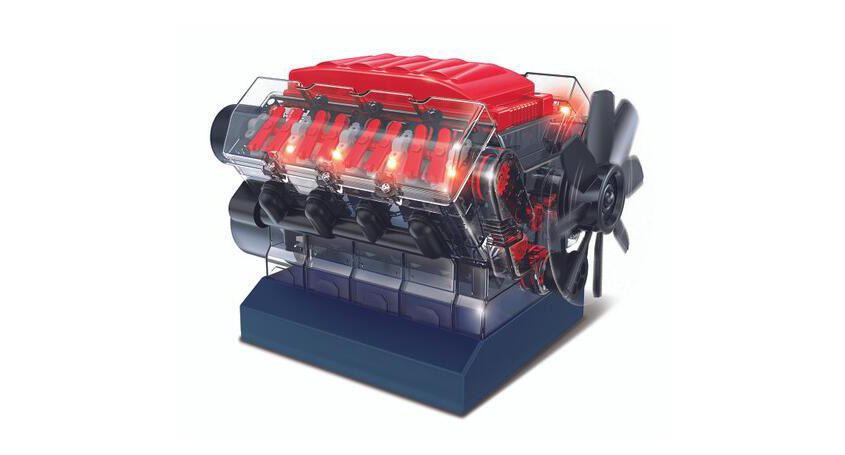How many parts are the internal combustion engine product models What does each mean

2023-07-17
How many parts are the internal combustion engine product models? What does each mean?

An internal combustion engine (ICE) consists of several essential components that work together to generate power. Here are the main parts of an internal combustion engine and their functions:
1.Engine Block: The engine block forms the foundation of the engine and houses various components. It provides support to the crankshaft, cylinders, and other internal parts. The block also contains coolant passages to regulate engine temperature.
2.Piston: Pistons are cylindrical components that move up and down inside the cylinders. They are attached to the connecting rods and transfer the force generated by the combustion process to the crankshaft. Pistons seal the combustion chamber and compress the fuel-air mixture during the compression stroke.
3.Cylinder: Cylinders are cylindrical chambers within the engine block where the combustion process occurs. They provide the space for the piston's motion, intake and exhaust valves, and the combustion chamber. The number of cylinders varies depending on the engine design (e.g., 4-cylinder, 6-cylinder, or 8-cylinder).
4.Crankshaft: The crankshaft converts the reciprocating motion of the pistons into rotational motion. It's connected to the pistons via the connecting rods. As the pistons move up and down, the connecting rods translate this motion into a rotating motion of the crankshaft, generating the engine's power output.
5.Camshaft: The camshaft controls the opening and closing of the intake and exhaust valves. It has lobes or cams that press against valve lifters, pushrods, or directly act on the valves to regulate their timing. The camshaft is driven by the crankshaft through a timing belt or chain.
6.Valves: Valves control the intake of air or fuel-air mixture into the cylinders and the exhaust of combustion gases. The intake valves open to allow the fuel-air mixture to enter, while the exhaust valves open to release the burned gases. Valve timing is coordinated with the crankshaft and camshafts for efficient engine operation.
7.Spark Plugs (SI Engines): Spark plugs are used in spark ignition engines to ignite the fuel-air mixture. They generate an electrical spark that ignites the compressed fuel-air mixture, initiating the combustion process.
8.Fuel Injectors (CI Engines): Fuel injectors are used in compression ignition engines to deliver fuel into the combustion chamber. They atomize the fuel and spray it directly into the combustion chamber under high pressure, where it mixes with the compressed air and ignites spontaneously.
9.Intake and Exhaust Manifold: The intake manifold supplies the engine with the air or the fuel-air mixture, while the exhaust manifold collects and directs the combustion gases out of the engine. These manifolds are responsible for the efficient flow of air/fuel and exhaust gases between the engine and the intake/exhaust system.
10.Oil Pump: The oil pump ensures proper lubrication of the engine's moving parts by circulating engine oil under pressure. It draws oil from the oil pan and distributes it to various engine components, such as bearings, camshafts, and pistons, to reduce friction and wear.
These are the primary components of an internal combustion engine, but there are also other auxiliary systems and components, such as the cooling system, ignition system, timing belts/chains, turbochargers/superchargers, and sensors, that contribute to the engine's overall operation and performance. The exact design and configuration of these components can vary depending on the engine's specific model and technology.
 2023-07-17
2023-07-17
